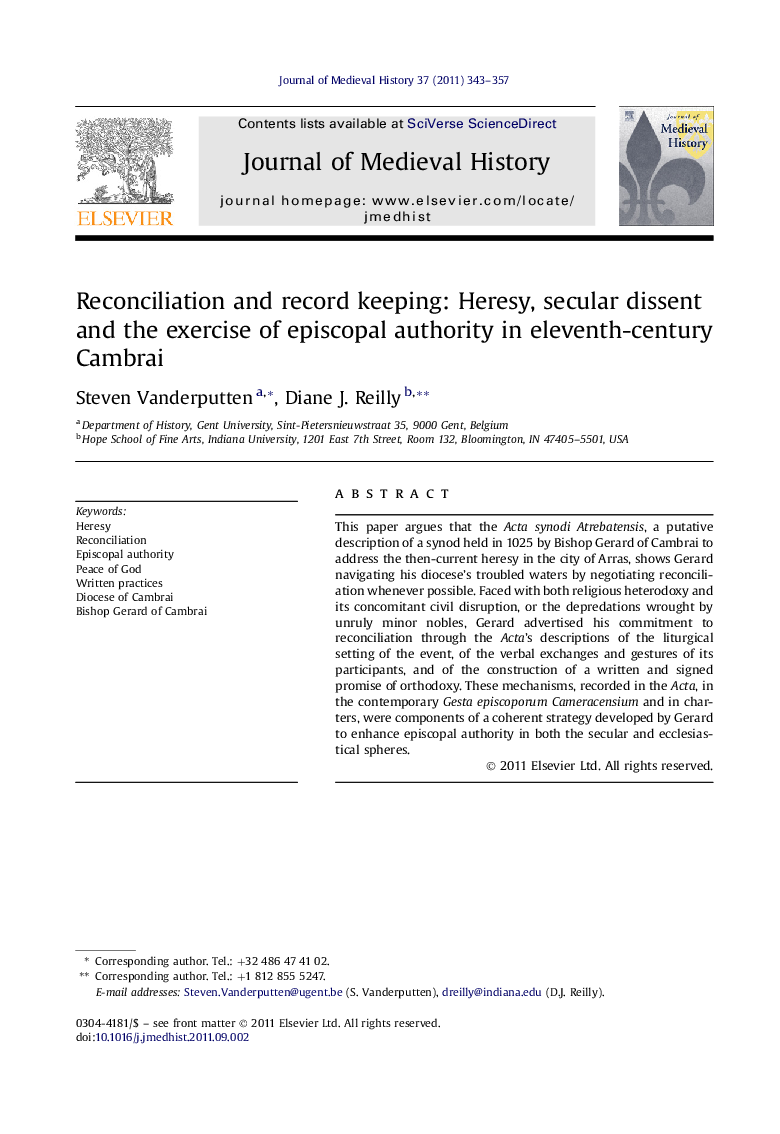| Article ID | Journal | Published Year | Pages | File Type |
|---|---|---|---|---|
| 1160065 | Journal of Medieval History | 2011 | 15 Pages |
This paper argues that the Acta synodi Atrebatensis, a putative description of a synod held in 1025 by Bishop Gerard of Cambrai to address the then-current heresy in the city of Arras, shows Gerard navigating his diocese’s troubled waters by negotiating reconciliation whenever possible. Faced with both religious heterodoxy and its concomitant civil disruption, or the depredations wrought by unruly minor nobles, Gerard advertised his commitment to reconciliation through the Acta’s descriptions of the liturgical setting of the event, of the verbal exchanges and gestures of its participants, and of the construction of a written and signed promise of orthodoxy. These mechanisms, recorded in the Acta, in the contemporary Gesta episcoporum Cameracensium and in charters, were components of a coherent strategy developed by Gerard to enhance episcopal authority in both the secular and ecclesiastical spheres.
► Analyses the Acta synodi Atrebatensis, the synod held in 1025 by Gerard of Cambrai. ► The text shows Gerard negotiating reconciliation in a case of heresy. ► Instrumental to this process was the liturgical setting of the synod. ► Crucial additions were elements from secular procedures for reconciliation. ► These mechanisms enhanced episcopal authority in the secular and ecclesiastical spheres.
